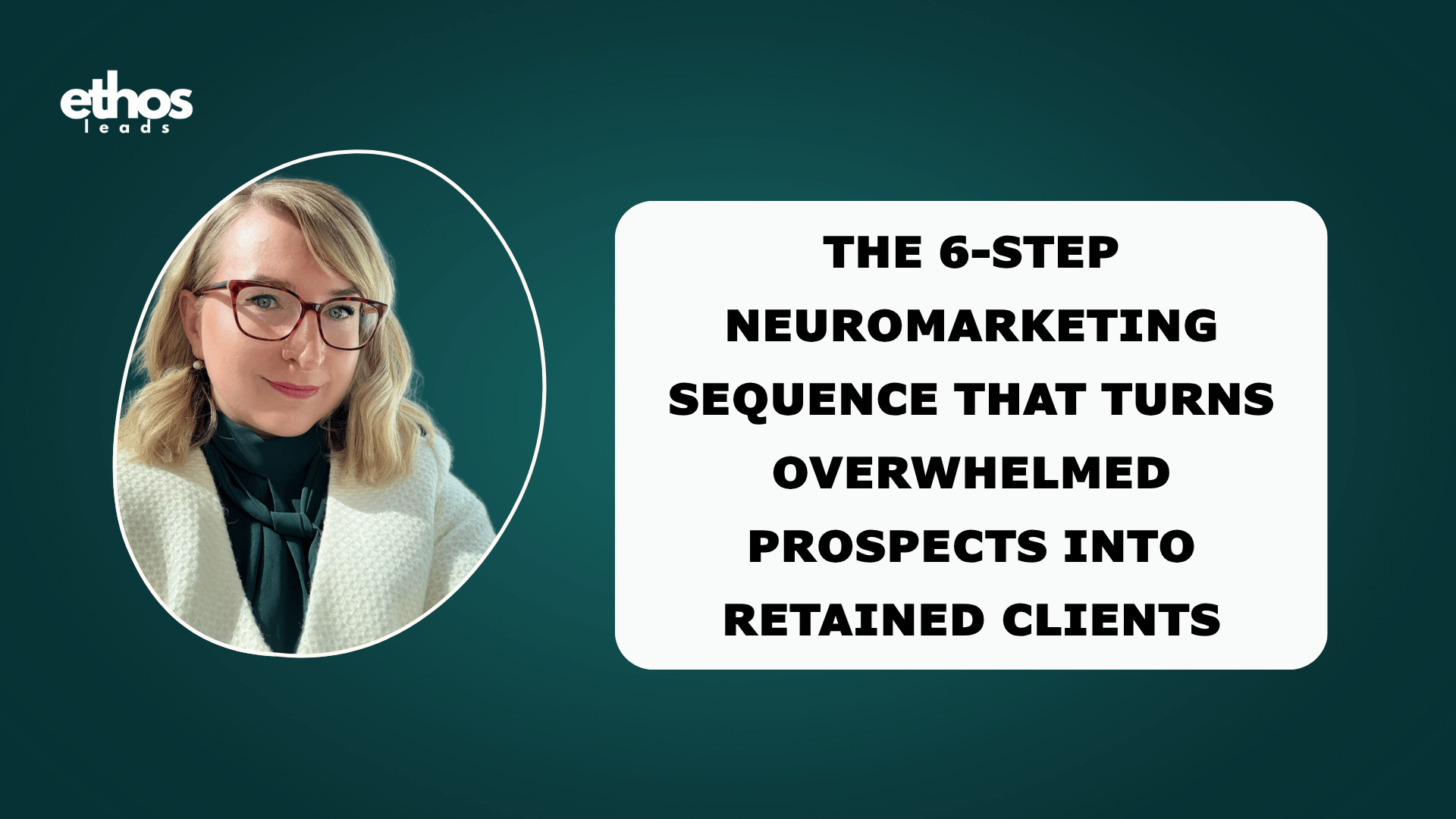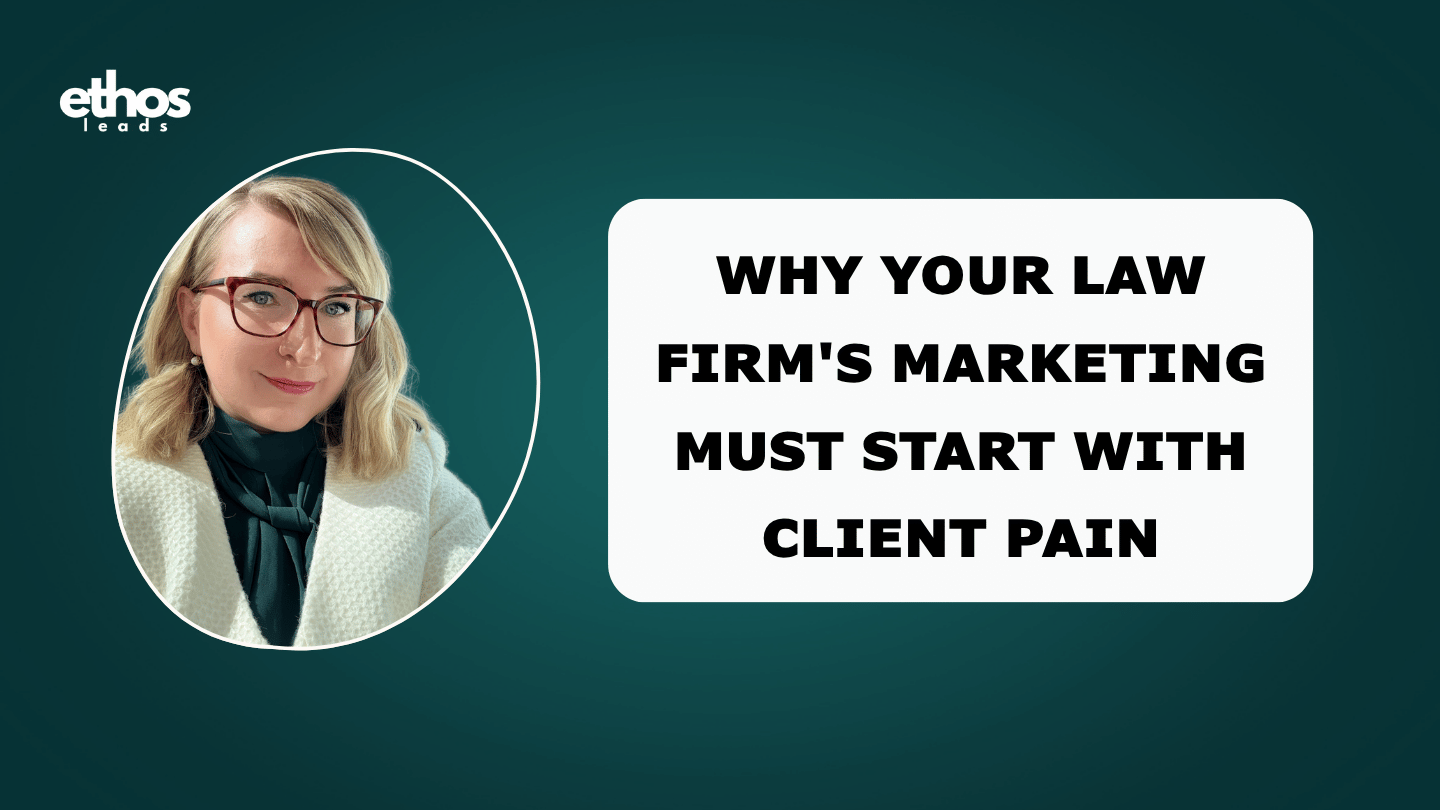Google Local Services Ads for Law Firms: Boost Your Practice's Visibility and Credibility
- Ads
- 15 mins
What Are Google Local Services Ads?
In this comprehensive guide, we'll explore the ins and outs of Google Local Services Ads for law firms, their benefits, and how to leverage them effectively.
Google Local Services Ads (LSAs) are a relatively new advertising format designed specifically for local service providers, including lawyers. These ads appear at the very top of Google search results, above both traditional pay-per-click ads and organic search results. What sets LSAs apart is their focus on local businesses and their unique pay-per-lead model.
When potential clients search for legal services in their area, they'll see a list of Google-screened and verified law firms at the top of their search results. These ads display key information about your firm, including your name, location, hours of operation, and customer ratings. The "Google Screened" badge adds an extra layer of credibility to your listing, assuring potential clients that your firm has been vetted by Google.

Key Features of Local Services Ads for Law Firms:
- Premium placement above all other search results
- Google Screened verification badge
- Pay-per-lead pricing model
- Background checks included
- Built-in lead management system
- Direct integration with Google Business Profile
Why Should Law Firms Consider Google Local Services Ads?
1. Guaranteed Visibility for High-Intent Searches
One of the most significant advantages of LSAs is their prominent position in search results.
LSAs offer “above-the-fold” placement on Google’s first page—making your firm the first thing potential clients see when they search for a lawyer in your practice area. Unlike traditional PPC ads, LSAs display directly at the top, catching attention immediately. This visibility is crucial because:
- Targeted Exposure: Your firm is displayed to users who are actively searching for specific legal services in your area.
- High-Intent Clients: LSAs reach potential clients at the peak of their interest, leading to higher conversion rates.
2. Pay-Per-Lead, Not Pay-Per-Click
Google LSAs operate on a “pay-per-lead” basis, meaning you only pay when a client contacts you through the ad—not simply when someone clicks. For law firms, this model is far more cost-effective than traditional Google Ads, as it ensures that your budget goes directly toward generating leads, not just clicks.
- Reduced Ad Spend Waste: Because you only pay for actual leads, you avoid the risk of overspending on unqualified clicks.
- Better Budget Control: This model is ideal for law firms that need to maximize ROI on advertising dollars.
Unlike traditional PPC ads where you pay for clicks, LSAs operate on a pay-per-lead model. This means you only pay when:
- A potential client calls your firm directly through the ad
- Someone books an appointment through your LSA profile
- A prospect sends you a direct message requesting information
3. Google’s “Google Screened” Badge Builds Instant Trust
LSAs for law firms come with Google’s coveted “Google Screened” badge, showing potential clients that your firm has passed Google’s rigorous background checks. This badge can significantly increase the credibility of your law firm and build trust even before clients click on the ad.
- Authority and Trust: Google’s screening process adds a layer of trust, often leading to higher click-through and conversion rates.
- Differentiation from Competitors: The badge sets you apart, especially in competitive legal fields where clients need an immediate signal of credibility.

The Google Screened badge isn't just another certification – it's a powerful trust signal that tells potential clients your firm has been thoroughly vetted. This includes:
- License verification for all attorneys
- Background checks for key staff members
- Insurance verification
- Customer review monitoring
4. Targeted Local Reach
LSAs are designed to connect local service providers with nearby clients. This localized approach ensures that your firm is visible to potential clients in your specific geographic area, increasing the likelihood of attracting relevant, local leads.
5. Increased Mobile Reach
With an increasing number of people using mobile devices to search for legal services, LSAs' mobile-friendly format is a significant advantage. The ads are designed to be easily viewable and interactive on smartphones, allowing potential clients to contact your firm with just a tap.
- Click-to-Call Feature: LSAs include a click-to-call feature, streamlining the process for potential clients to reach you with one tap.
- Improved User Experience: By catering to mobile users, LSAs help law firms provide a seamless and convenient experience, increasing conversion potential.
6. Detailed Lead Insights and Performance Tracking
Google LSAs come equipped with a user-friendly dashboard that offers valuable insights into lead volume, cost per lead, and lead sources. This data allows law firms to better understand how clients are finding them, which practice areas generate the most interest, and where to focus future marketing efforts.
- Data-Driven Strategy: LSAs allow for continuous optimization based on real-time data.
- Clear ROI Tracking: Track the ROI of each lead, enabling you to make informed decisions and adjust strategies for higher performance.
By leveraging these benefits, law firms can enhance their online presence, attract more qualified leads, and grow their practice in a measurable, cost-effective way.
Here's how LSAs benefit law firms compared to traditional PPC Ads:
|
Feature |
Google Local Services Ads (LSA) | Traditional Pay-Per-Click (PPC) Ads |
| Ad Placement | Top of search results | Below LSAs and organic listings |
| Pricing Model | Pay-per-lead | Pay-per-click |
| Targeting | Local & service-specific | Broader targeting options |
| Trust & Credibility | "Google Screened" badge | No verification badge |
| Ad Creation & Management | Simpler, focused on info | More hands-on, requires ad copy |
| Cost-Effectiveness | Potentially more cost-effective | Can be less cost-effective |
| Visibility | Additional top-of-page placement | Fewer potential display positions |
| Screening Process | Required screening for law firms | No screening process |
What is the difference between Google Local Services Ads (LSAs) and traditional Pay-Per-Click (PPC) ads for law firms?
- Ad Placement:
- LSAs: Appear at the very top of Google search results, above both traditional PPC ads and organic listings.
- PPC: Appear below LSAs but still above organic search results.
- Pricing Model:
- LSAs: Pay-per-lead model. Law firms only pay when a potential client contacts them directly through the ad.
- PPC: Pay-per-click model. Firms pay for each click on their ad, regardless of whether it results in a lead.
- Targeting:
- LSAs: Specifically designed for local service providers, targeting users searching for legal services in a particular geographic area.
- PPC: Offers broader targeting options based on demographics, interests, and search queries.
- Trust and Credibility:
- LSAs: Include a "Google Screened" or "Google Guaranteed" badge, building trust with potential clients.
- PPC: Does not offer this verification feature.
- Ad Creation and Management:
- LSAs: Simpler to create and manage, focusing on accurate business information rather than ad copy.
- PPC: Requires more hands-on management, including crafting ad copy, selecting keywords, and setting bids.
- Cost-Effectiveness:
- LSAs: Often considered more cost-effective due to the pay-per-lead model and ability to dispute irrelevant leads.
- PPC: Can be less cost-effective as firms pay for all clicks, including those that don't result in leads.
- Visibility:
- LSAs: Provide an additional opportunity for visibility, potentially allowing law firms to appear in up to four spots on the first page of Google results.
- PPC: Offers visibility, but typically in fewer positions on the search results page.
- Screening Process:
- LSAs: Require law firms to pass Google's screening process, which includes license verification.
- PPC: Does not require a screening process.
In summary, while both LSAs and traditional PPC can be effective for law firms, LSAs offer advantages in terms of prime placement, trust-building features, and a potentially more cost-effective lead generation model. However, PPC offers broader targeting options and may be suitable for firms looking to reach a wider audience beyond their immediate geographic area.
How to Set Up and Optimize Your Google Local Services Ads
Launching your first LSA campaign may seem complex, but the process is straightforward. Here’s a quick roadmap:
1. Sign Up for Google LSAs: Go to the Google Local Services Ads portal and create an account.
2. Complete Google’s Background Check: This involves license verification, insurance checks, and background screenings.
Before you can launch your LSA campaign, you'll need to:
- Verify your law firm's business information
- Submit required licenses and insurance documentation
- Complete background checks for key personnel
- Maintain a minimum 3-star rating on Google
Your LSA profile should be carefully crafted to:
- Highlight your areas of legal expertise
- Showcase your firm's unique value proposition
- Include high-quality photos of your team and office
- Feature comprehensive service descriptions
Add a professional headshot and connect your LSA profile to your existing customer reviews.
5. Encourage and Manage Reviews: Positive reviews can significantly boost your LSA performance. Encourage satisfied clients to leave reviews, and respond promptly and professionally to all feedback, both positive and negative.6. Set Your Budget: Determine your budget based on your preferred cost-per-lead and monthly lead goals.
Consider these factors when setting your LSA budget:
- Average cost per lead in your practice area
- Your target number of monthly leads
- Seasonal fluctuations in demand
- Competition level in your market
7. Monitor & Optimize: Track your campaign performance and continually refine your approach based on the data you gather.
Eligible business services
View the list of practice areas eligible for a Google Screened badge:
- Bankruptcy lawyer
- Business lawyer
- Contract lawyer
- Criminal lawyer
- Disability lawyer
- DUI lawyer
- Estate lawyer
- Family lawyer
- Immigration lawyer
- IP lawyer
- Labor lawyer
- Litigation lawyer
- Malpractice lawyer
- Personal injury lawyer
- Real estate lawyer
- Tax lawyer
- Tax specialist
- Traffic lawyer
Best Practices for Optimizing Your LSA for Better ROI:
1. Optimize Your Google Business Profile
Ensure your Google Business Profile is complete, accurate, and up-to-date. This forms the foundation of your LSA and impacts your visibility and ranking.
2. Maintain Consistent NAP Information
Ensure your Name, Address, and Phone number (NAP) information is consistent across all your online profiles, including your Google My Business listing and website. This consistency helps improve your local search visibility.
3. Gather and Manage Reviews
Positive reviews are crucial for LSA performance. Encourage satisfied clients to leave reviews and respond promptly to all feedback, both positive and negative.
4. Highlight Your Unique Value Proposition
Use your LSA profile to clearly communicate what sets your firm apart from competitors. Whether it's your years of experience, specialized expertise, or client-focused approach, make sure potential clients understand why they should choose your firm.
5. Respond Quickly to Leads
The legal services market is competitive, and potential clients often contact multiple firms. Aim to respond to LSA leads within minutes to increase your chances of securing the client.
Quick response times are crucial for LSA success:
- Aim to respond to leads within 5 minutes
- Set up automated response systems for after-hours inquiries
- Use the Google LSA app for mobile lead management
- Track response times and conversion rates
6. Manage Lead Quality
Improve lead quality by:
- Setting specific business hours
- Defining clear service categories
- Using detailed screening questions
- Regularly reviewing and disputing invalid leads
7. Ensure Mobile Optimization
Since many potential clients search on mobile devices, make sure your landing pages and overall website are mobile-friendly.
8. Track and Analyze Performance Metrics
Regularly monitor key metrics such as number of charged leads, cost per lead, conversion rates, and return on ad spend. Use this data to refine your strategy over time.
9. Track Your ROI
Keep detailed records of which leads convert into clients and the value of those cases. This data will help you refine your LSA strategy and budget over time.
Maximize your budget efficiency by:
- Tracking peak conversion times
- Adjusting bids based on lead quality
- Monitoring competitor activity
- Regular performance analysis and adjustment
10. Maintain Google Screened Status
Keep all your licensing and insurance information up to date to maintain your Google Screened badge, which enhances trust and credibility.
11. Integrate with Your Overall Marketing Strategy
While LSAs can be powerful on their own, they work best as part of a comprehensive digital marketing strategy. Combine them with SEO, content marketing, and other advertising channels for maximum impact.
By implementing these optimization strategies, law firms can improve the performance of their Google Local Services Ads, attract higher-quality leads, and ultimately achieve a better return on investment.
Potential Challenges and How to Overcome Them
1. High Competition
In some areas and practice types, competition for LSAs can be fierce. To stand out, focus on gathering positive reviews, responding quickly to leads, and continuously optimizing your profile.
Solution:
- Focus on maintaining high review ratings
- Optimize response times
- Expand service categories strategically
- Consider targeting less competitive practice areas
2. Budget Management
While the pay-per-lead model can be cost-effective, it's important to monitor your spending closely. Set daily and weekly budget caps, and regularly review your lead quality to ensure you're getting a good return on investment.
Solution:
- Start with a conservative budget. Use this Ad Budget Calculator for Law Firms
- Track ROI meticulously
- Adjust bids based on performance data
- Focus on high-converting practice areas
3. Lead Quality
Not all leads will be a perfect fit for your firm. Develop a system for quickly qualifying leads and politely redirecting those that don't match your services or expertise.
Solution:
- Implement thorough screening questions
- Set clear expectations in your profile
- Dispute irrelevant leads promptly
- Track and analyze lead sources
4. Maintaining Google Screened Status
Staying compliant with Google's requirements is crucial. Keep all your licensing and insurance information up to date, and promptly address any issues that could jeopardize your Google Screened status.
Measuring Success and ROI
Here are some key metrics law firms should track to measure the success of their Google Local Services Ads (LSAs):
- Number of Charged Leads: This metric shows how many leads the law firm received that they were charged for by Google. Tracking this over time can help identify trends and insights.
- Total Amount Charged for Leads: The total cost of the leads generated from LSAs for a given period. This is important for calculating return on investment.
- Number of Bookings: How many of the leads actually resulted in booked appointments or client engagements. This helps measure conversion rates.
- Return on Ad Spend (ROAS): Calculated by dividing revenue generated from leads by the total amount charged for leads. A good target is above 3x ROAS for LSAs.
- Cost Per Lead (CPL): Monitoring the average cost per lead allows firms to set goals, calculate ROI, and plan budgets. Significant changes in CPL may indicate issues with ad effectiveness.
- Click-Through Rate (CTR): The percentage of people who click on the ad after seeing it. For LSAs, this was around 3% on average based on the case study data provided.
- Call-Through Rate: Specifically for mobile, this measures how many people called the firm directly from the ad. The case study showed this was around 1.2-1.3%.
- Branded vs. Non-Branded Searches: While harder to measure precisely, tracking the percentage of searches that are branded vs. non-branded can provide insights into ad performance and brand awareness.
- Review Ratings: The number and quality of reviews, as these impact LSA performance and visibility.
- Conversion Rate: The percentage of leads that ultimately become paying clients.
By tracking these metrics, law firms can gain a comprehensive understanding of their LSA performance and make data-driven decisions to optimize their campaigns. Regular monitoring and analysis of these metrics will help firms maximize their return on investment in Google Local Services Ads.
Key Takeaways
Google Local Services Ads offer a unique opportunity for law firms to increase their visibility, attract high-quality leads, and build credibility in their local markets. With benefits like high-intent exposure, pay-per-lead pricing, Google’s “Google Screened” badge, mobile reach, and performance tracking, LSAs are a smart investment. By setting up LSAs, your law firm can connect with clients who need your expertise right now, driving growth without the typical digital marketing challenges.
Success with LSAs requires a strategic approach, ongoing optimization, and integration with your broader digital marketing efforts. As with any marketing channel, it's essential to track your results, stay responsive to leads, and continuously refine your strategy based on performance data.






